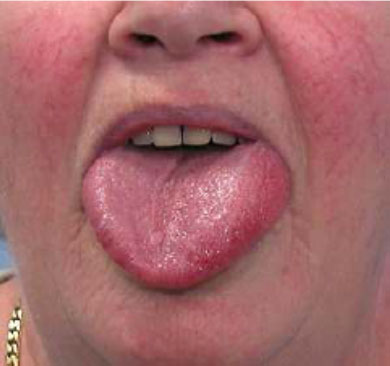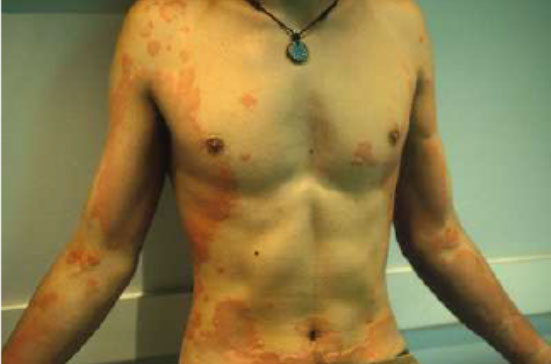Introduction
“Do you have any drug allergies?”
You may be asked this question when you see a doctor or pharmacist. It is important to inform them regarding any drug allergies that you have. This is due to the severe reactions that can occur, caused by the drug.
Drug allergy can be simply defined as an allergic reaction caused by a drug. It is actually an adverse drug reaction due to hypersensitivity that mediates a specific immune response directed at the drug. This hypersensitive reaction is characterized by a group of symptoms called allergy symptoms. Depending whether the allergic drug reactions are immediate or delayed or a combination of both, they can cause symptoms in the nose, lungs, throat, sinuses, ears, lining of stomach or on the skin.
Importance & Identification
Everyone reacts to drugs differently. A person who takes a certain drug may get rashes, while another person who takes the same drug may not get any adverse reactions. All drugs have the potential to cause side effects, but only 5% to 10% of adverse reactions to drugs are allergies.
Allergic reactions can range from mild rashes to life threatening systemic reactions. Therefore, it is very important to identify the signs and symptoms of allergic reactions.
Most allergic reactions do not occur on the first exposure to the drug. The second and subsequent exposure causes an immune response. Below are examples of allergic reactions that can occur3:
-
Anaphylaxis
-
Skin reaction e.g. rashes, hives, itchiness, photoallergy
-
Shortness of breath
-
Fainting
-
Arrhythmia
-
Angioedema (swelling beneath the skin)
-
Joint/ muscle pain

Angioedema

Urticaria
Source: Economic Impact of Allergic Disease In Australia: Not to be Sneezed At, Australasian Society of Clinical Immunology and Allergy (ASCIA), November 2007
Skin rashes are the most common symptoms of allergic reactions. Sometimes, blisters develop as a result of drug rashes. These blisters are painful and usually erode the surfaces of eye, lips, mouth and genital region. This serious complication is known as Stevens-Johnson Syndrome.
Rarely, toxic epidermal necrolysis (TEN) can occur due to drug allergy. TEN is an allergic reaction characterized by skin detachment like a patient who suffered burns.
Both Stevens-Johnson Syndrome and toxic epidermal necrolysis can be life-threatening.
Anaphylaxis is one of the most severe life-threatening types of allergic reactions. Symptoms develop rapidly, often within seconds or minutes. Symptoms of anaphylaxis reactions includes:
-
nasal congestion
-
difficulty breathing
-
cough
-
blueness of the skin (cyanosis), including the lips or nail beds
-
fainting, lightheadedness
-
dizziness
-
anxiety
-
confusion, slurred speech
-
rapid pulse
-
sensation of feeling the heart beat (palpitations)
-
nausea, vomiting
-
diarrhea
-
abdominal pain or cramping
Medications Commonly Associated with Allergies
People can experience allergic reactions to just about any medication, although some are more common than others. Antibiotics are the most common source of drug-related allergies. Recently, chemotherapy drug and monoclonal antibodies have also been shown to induce anaphylaxis. Here is a list of the most common medication allergies (or non-allergies, in some cases):
-
Penicillin (and all related antibiotics). About 1 in every 10 people reports a history of an “allergic reaction” to penicillin. It turns out that much less than 10% of those who think they are allergic to penicillin actually are. However, people with a true allergy to penicillin can have life-threatening anaphylaxis. Therefore, it is important to tell your doctor about your past reaction to the medication.
-
Cephalosporins (and all related antibiotics). Severe reactions to cephalosporins are much less common than with penicillins. However, there is a small chance that someone with a true penicillin allergy could also react to cephalosporins, since the drugs are related.
-
Sulfonamides (including antibiotics, oral diabetes medications and some water pill diuretics). It is unclear whether these reactions are truly allergic or due to another immunologic process. There is no reliable test available to determine if a person is allergic to this class of medications.
-
Non-Steroidal Anti-Inflammatory Drugs (NSAID), including aspirin, ibuprofen and naproxen. This class of medications can cause allergic and non-allergic flares of hives/swelling, worsen asthma and result in anaphylaxis. There is no reliable test available for most people with reactions to these medications.
-
Local Anesthetics. True allergic reactions to local anesthetics (novocaine, lidocaine) are extremely rare, and usually due to other ingredients in the medication, such as preservatives or epinephrine (present in the local anesthetic to make the medication last longer once it’s injected).
-
General Anesthesia. Some medications used during surgery are very common causes of true allergic reactions and anaphylaxis.
Drug Allergy Card
As there are possibilities that patients can receive drugs they are allergic to and that the allergic reactions can be life threatening, patients and family members should be educated on the drugs and other potentially cross-reacting drugs they are allergic to. In addition, patients should be provided with drug allergy cards. The card will have the necessary information on the patient’s drug allergies to enable healthcare practitioners select the appropriate medicine for the patient. Patients are advised to bring and show their drug allergy cards to healthcare practitioners when seeking treatment or getting medicines.
Conclusion
Drug allergies are uncommon but can cause reaction that ranges from mild to life-threatening. Thus, it is important to check for any drug allergies to avoid life-threatening conditions such as anaphylaxis. Hence, once an allergy is discovered, the patient should always to inform the healthcare provider when seaking treatment or getting medications.
| Last Reviewed | : | 23 April 2014 |
| Writer | : | Mohd Azuwan bin Mohd Zubir |
| Reviewer | : | Hazlin bt. Othman |







